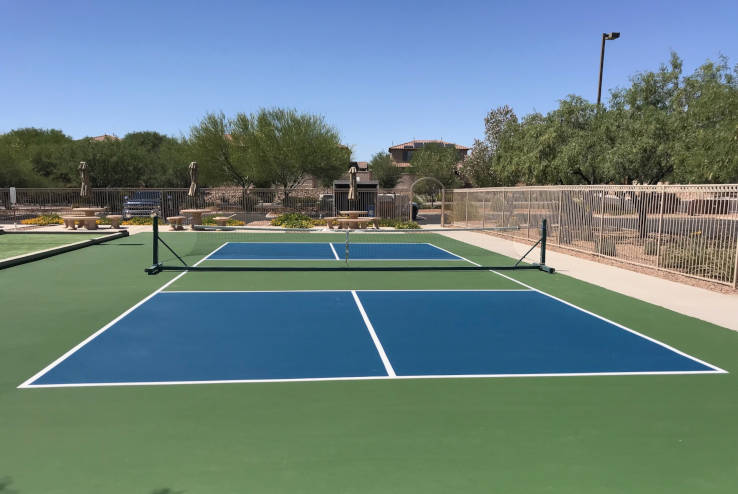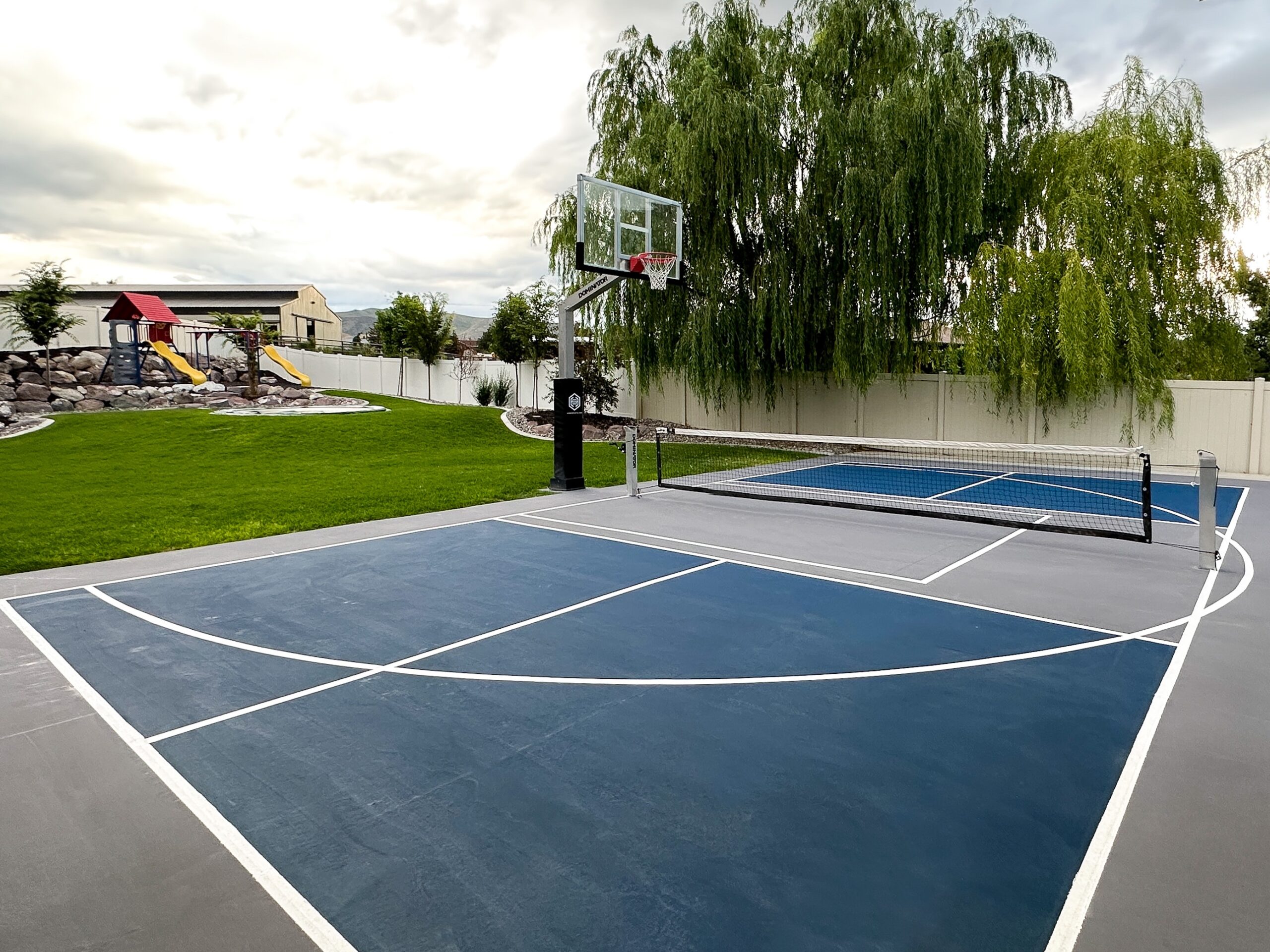Technologies in Pickleball Court Construction: Trends You Must Know
Technologies in Pickleball Court Construction: Trends You Must Know
Blog Article
Increase Resident Interaction With Community-Driven Pickleball Court Projects
The appearance of community-driven pickleball court jobs offers an unique possibility to promote neighborhood engagement and strengthen community connections. The genuine question continues to be: just how can these grassroots initiatives be purposefully applied to ensure sustainability and inclusivity in diverse areas?
Relevance of Neighborhood Engagement
Neighborhood interaction is a crucial aspect in the successful development of pickleball court jobs, as it cultivates a sense of possession and collective obligation amongst citizens. When community members are proactively included in the planning and application phases, they are most likely to advocate for the project's long-term success. Engaging stakeholders such as regional players, families, and recreational groups guarantees that the centers fulfill the varied requirements and preferences of the community.
Additionally, neighborhood interaction cultivates a helpful atmosphere where homeowners feel encouraged to contribute their resources and ideas. Pickleball court construction. This collaborative technique can cause ingenious options that enhance the layout and capability of the courts, making them extra appealing to a wider target market. Furthermore, entailing homeowners in decision-making processes can strengthen social ties, promoting inclusivity and unity within the area
The exposure of community assistance for a pickleball job can additionally play a critical duty in protecting funding and approval from regional authorities. By showing a common commitment to entertainment growth, neighborhoods can efficiently support for resources and policy adjustments that favor the facility of pickleball courts, inevitably enriching the local culture and entertainment landscape.
Steps to Start a Task
Launching a pickleball court job requires an organized approach that constructs on the foundation of neighborhood interaction developed in previous conversations. The primary step is to put together a project committee comprising regional stakeholders, enthusiasts, and agents from relevant organizations. This diverse team makes sure that several point of views are taken into consideration.
Following, conduct a requirements evaluation within the community. Surveys, emphasis groups, and public conferences can be reliable in determining passion and event input on prospective court locations, desired facilities, and scheduling preferences. Following this, establish a project plan detailing goals, timelines, and duties.
When the strategy is in area, involve with regional authorities to recognize zoning laws and any type of needed authorizations. Communicating transparently with the area throughout this process is crucial, as it promotes depend on and encourages more engagement.
Additionally, organizing community events can aid maintain momentum and excitement. These events can function as systems for further discussion and assistance to strengthen community connections. Document every action taken and preserve in-depth records, as this will be valuable for future stages of the project, consisting of funding and resource purchase.
Financing and Resources Available
Securing funding and resources for a pickleball court job is commonly an essential step that can establish the project's usefulness and success. Numerous opportunities exist for obtaining monetary assistance, varying from public financing to personal sponsorships. Regional federal government gives, typically targeted at advertising community health and entertainment, can provide considerable sponsorship for such initiatives.
In addition to government sources, not-for-profit companies and foundations often provide grants particularly for sporting activities and community development tasks. Involving local businesses as enrollers can also be a worthwhile approach; numerous companies aspire to purchase neighborhood campaigns that boost their corporate social obligation account.
Crowdfunding systems have actually emerged as a viable choice for grassroots fundraising, enabling community participants to contribute straight to the project. This technique not just elevates funds however likewise promotes a sense of possession among individuals.
Layout and Preparation Considerations
Reliable style and planning are fundamental components of any kind of successful pickleball court project complying with the acquisition of financing and sources. A thorough evaluation of the suggested place is essential; this includes examining accessibility, distance to existing area features, and the potential for presence and engagement.
The design of the court have to follow official dimension specifications while considering the bordering atmosphere. Including attributes such as seating, color frameworks, and proper illumination can considerably enhance gamer experience and spectator enjoyment. Materials selected for the court surface area must prioritize resilience and safety and security, with options like acrylic or asphalt offering optimal efficiency.
Involving area participants in the layout procedure fosters a feeling of ownership and ensures that the center meets local demands - Pickleball court construction. This can be accomplished through public appointments and surveys, permitting stakeholders to share their choices and issues
Sustainability needs to likewise be a top priority; integrating environmentally friendly products and techniques can add to long-term feasibility. Developing a maintenance plan to make certain the court stays in excellent condition will support ongoing community involvement and engagement in pickleball activities.

Success Stories and Study
Highlighting the transformative influence of community-driven campaigns, a number of success stories their website illustrate just how see here now joint efforts have actually led to the growth of lively pickleball courts across various regions. One noteworthy instance is the effort in a village in Florida, where residents united to transform an underutilized tennis court into a dedicated pickleball center. With fundraising occasions and collaborations with local organizations, the neighborhood elevated sufficient funds to mount new nets, resurfacing, and lines, inevitably fostering a vibrant hub for regional gamers.
Likewise, in a suburban location of The golden state, a grassroots motion arised to develop pickleball courts in a regional park. The task not only engaged volunteers for building and construction however likewise consisted of workshops to involve community participants in the sporting activity. As an outcome, the courts became a prime focus for social communication and fitness, drawing in gamers of all ages.
These case research studies exhibit exactly how community-driven tasks can boost neighborhood engagement, promote physical task, and reinforce social bonds. By leveraging collective sources and enthusiasm, communities can successfully maintain and produce pickleball centers that serve this varied populations and cultivate a sense of belonging.

Verdict
To conclude, community-driven pickleball court projects function as crucial instruments for boosting local involvement and promoting a feeling of belonging among citizens. By prioritizing stakeholder participation throughout the planning and execution phases, these initiatives can properly address varied community requirements. In addition, leveraging available resources and analyzing effective study can offer useful insights for future projects. Inevitably, such initiatives add to the transformation of public areas into vibrant facilities of health and fitness and social interaction, reinforcing neighborhood ties.
The development of community-driven pickleball court projects provides a distinct possibility to cultivate neighborhood involvement and enhance area connections.Community interaction is an essential component in the effective growth of pickleball court tasks, as it promotes a feeling of ownership and cumulative responsibility amongst residents. When neighborhood participants are proactively included in the preparation and implementation phases, they are a lot more likely to advocate for the task's long-term success.Launching a pickleball court task calls for a methodical technique that constructs on the foundation of area interaction developed in previous conversations. The job not only involved volunteers for building but also consisted of workshops to engage community participants in the sporting activity.
Report this page